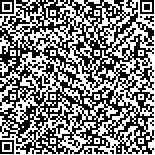| 引用本文: | 付伟,谢东,班春梅,邓亚婕,代芳,王松,曹洁.幽门螺杆菌感染胃组织基因芯片生物信息学分析[J].生物信息学,2019,17(1):45-52. |
| FU Wei,XIE Dong,BAN Chunmei,DENG Yajie,DAI Fang,WANG Song,CAO Jie.Bioinformatics analysis of Helicobacter pylori infected gastric tissue microarray[J].Chinese Journal of Bioinformatics,2019,17(1):45-52. |
|
| |
|
|
| 本文已被:浏览 2300次 下载 1704次 |

码上扫一扫! |
|
|
| 幽门螺杆菌感染胃组织基因芯片生物信息学分析 |
|
付伟,谢东,班春梅,邓亚婕,代芳,王松,曹洁
|
|
(解放军联勤保障部队 第925医院消化血液科,贵阳 550009)
|
|
| 摘要: |
| 为探讨幽门螺杆菌感染胃组织后差异基因变化,深入分析参与疾病发生、发展的分子机制。从GEO(Gene Expression Omnibus)数据库下载幽门螺杆菌感染胃组织基因芯片数据(GSE5081),根据胃粘膜组织是否受损分组,分别比较幽门螺杆菌感染者与阴性对照组,获得差异基因并进行功能分析包括GO分析、信号通路分析,基因相互作用及基因共表达,得到重要核心基因,并通过实时定量PCR方法进行验证。结果表明:得到参与幽门螺杆菌感染后上调的44个主要基因,主要涉及的GO分析及信号通路包括免疫反应、炎症反应、抗原提呈、细胞因子通路、因子受体关联,细胞粘附分子等。研究发现核心基因CXCR4,CCL20,JAK3,TNFAIP2,PLEK,HLA-DMA,PTPRC,CXCL13,BCL2A1,并通过实时定量PCR的方法进行部分验证,CXCR4,CXCL5,CXCL2在幽门螺杆菌感染后的胃黏膜组织表达高于对照组。幽门螺杆菌感染后胃粘膜组织引起免疫反应,炎症反应,抗原提呈,因子受体关联,细胞粘附分子通路的激活。同时发现一些主要的趋化因子相关基因CXCR4,CXCL5,CXCL2,CCL20,CXCL1等,涉及增殖,炎症,免疫,凋亡基因JAK3,TNFAIP2,PLEK,HLA-DMA,PTPRC,BCL2A1等的表达上调,并实时定量PCR验证部分相关基因的表达。这些结果为从分子网络机制层面上认识幽门螺杆菌感染提供分析思路及基础。 |
| 关键词: 幽门螺杆菌 基因芯片 生物信息学分析 胃黏膜组织 |
| DOI:10.12113/j.issn.1672-5565.201804005 |
| 分类号:R573.3 |
| 文献标识码:A |
| 基金项目:解放军联勤保障部队第925医院院内课题(No.YNKT2016-01). |
|
| Bioinformatics analysis of Helicobacter pylori infected gastric tissue microarray |
|
FU Wei,XIE Dong,BAN Chunmei,DENG Yajie,DAI Fang,WANG Song,CAO Jie
|
|
(Department of Hematology, No.925 Hospital of PLA Joint Logistics Support Force, Guiyang 550009, China)
|
| Abstract: |
| To analyze the differential gene changes after Helicobacter pylori (H. pylori) infection in gastric tissue, and to further analyze the molecular mechanism involved in the occurrence and development of disease, the H. pylori infected gastric tissue microarray data (GSE5081) were downloaded from the Gene Expression Omnibus (GEO) database. In addition, according to whether the gastric mucosal tissue was damaged or not, the data were divided into the H. pylori infected group and the negative control group. Comparison was made between the two groups to obtain differential genes, and functional analyses including GO analysis, analysis of signal pathways, gene interactions, and gene co-expression were carried out, which obtained important core genes and were validated by real-time quantitative PCR. Results show that 44 major genes were involved in the upregulation of H. pylori infection. The mainly involved GO analyses and signal pathways included immune response, inflammatory response, antigen presentation, cytokine pathway, factor receptor association, cell adhesion molecules, and so on. The core genes were CXCR4, CCL20, JAK3, TNFAIP2, PLEK, HLA-DMA, PTPRC, CXCL13, and BCL2A1,and were partially verified by real-time quantitative PCR methods. The gene expressions of gastric mucosa with CXCR4, CXCL5,and CXCL2after H. pylori infections were higher than the control group. The gastric mucosal tissue infected by H. pylori induced immune response, inflammatory response, antigen presentation, factor receptor association, and cell adhesion molecule pathway activation. Meanwhile, some major chemokine-related genes CXCR4, CXCL5, CXCL2, CCL20,and CXCL1were associated with the upregulation of proliferation, inflammation, immunity, apoptosis genes such as JAK3, TNFAIP2, PLEK, HLA-DMA, PTPRC,and BCL2A1.Real-time quantitative PCR was used to verify the expression of some related genes. The research results provide an analytical idea and basis for understanding the H. pylori infection from the perspective of molecular network mechanism. |
| Key words: Helicobacter pylori Gene microarray Bioinformatics analysis Gastric mucosa |
|
|
|
|






